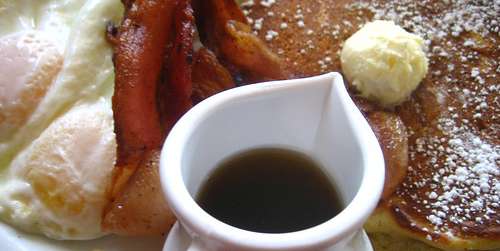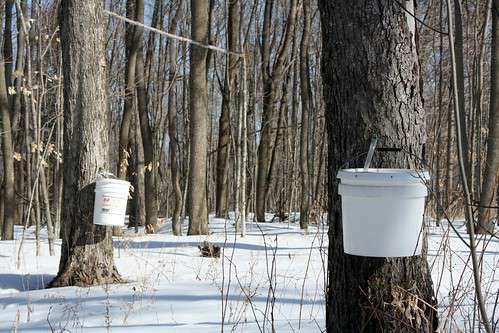
The new USDA grading system for maple syrup relies on spectrophotometric analysis for objective classification. Image Source: Flickr user Jeremy Keith
When you shop for maple syrup, how do you choose? Do you want a golden yellow syrup? A warm amber? Or are you looking for a darker, richer shade of brown? For most of us, color is the primary marker by which we evaluate syrups, each hue indicating a unique history and flavor. In fact, the color of maple syrup is so critical that in the United States it is the primary determinant of grade and in Canada it is the sole determinant. However, for many years, the USDA grading standards for maple syrup were out of step with more sophisticated systems, creating confusion among consumers and frustration for producers. To address these concerns and harmonize North American markets, the USDA recently released new standards that redefine syrup color classification, and which rely on spectrophotometric color measurement to place each product within its appropriate grade.
Determinants of Color
The maple syrup season begins in the cold of late winter when sap begins to flow. Initially, the sap is transparent, nearly colorless, and composed of water and sucrose.1 However, as snow thaws and temperatures rise, so too does the microorganism count in the sap, creating an enzymatic reaction that converts sucrose into invert sugars (glucose and fructose). Over the course of the season, microorganism populations continue to grow, leading to an ever-increasing proportion of invert sugars. Meanwhile, amino acid activity increases alongside these sugars as the trees prepare for the growing season.

The color of maple syrup is largely determined by the time of year the sap is taken from the tree. Image Source: Flickr user Jason Dean
Once harvested, the sap is processed to create a syrup concentrate through heat-induced evaporation.2 All sap, regardless of harvest time, is treated in the same manner. But the nonenzymatic browning reaction—the chemical changes that give the syrup its unique color and flavor – caused by processing will vary depending on the qualities of the raw sap. The higher the ratio of invert sugars, the more profound the browning reaction will be. A magic of this phenomenon is the Maillard reaction, the chemical process by which amino acids and invert sugars react under heat to produce richer colors and flavors. The specific response of the raw sap to manufacturing practices determines the final color of the syrup.


